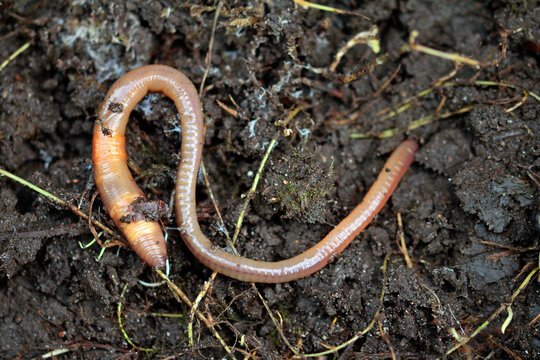
Imagine an earthworm as nature’s little recyclers, breaking down organic matter and enriching the soil as they go. You might be wondering: how do these humble creatures reproduce, grow, and contribute to our environment? Let’s dig in and explore the lifecycle of a common earthworm, from its humble beginnings to its vital role in the ecosystem.
What Are Common Earthworms?
Before we dive into their lifecycle, let’s take a moment to understand what common earthworms are. These creatures, particularly the species *Lumbricus terrestris*, are often found in gardens, forests, and fields. Known for their reddish-brown color and segmented bodies, they can grow up to 14 inches long!
Earthworms are *hermaphrodites*, which means each individual has both male and female reproductive organs. This unique trait helps them reproduce more effectively, since finding a mate isn’t always easy in the soil. They play an essential role in soil health by aerating it and helping with nutrient cycling.
The lifecycle of an earthworm can be broken down into several stages, which we’ll explore in detail.
Stage 1: Egg Stage
The first stage in the life of an earthworm begins with their eggs. After two earthworms mate, they produce a gelatinous cocoon that contains several eggs. This cocoon is usually yellowish or transparent and can be found in the soil.
Here’s the thing: the eggs can take anywhere from 2 to 11 weeks to hatch, depending on the temperature and moisture levels of the soil. Warmer, moist environments help speed up the process. Each cocoon can hold up to 20 eggs, but not all will survive.
After the incubation period, tiny baby earthworms emerge from their cocoons. They’re only about 1 inch long and look like miniature versions of adult earthworms. This stage is known as the *hatchling stage*.
Stage 2: Hatchling Stage
After hatching, the baby earthworms begin their journey in the soil. They’re small and vulnerable, which means they have to be careful where they move. During this stage, they primarily feed on organic material like decaying leaves and plant matter.
As they eat, they help break down this organic matter, turning it into nutrient-rich compost. This is essential for soil health! Within a few weeks, these hatchlings will grow and mature, increasing in size as they feast on the food around them.
You might notice that the young earthworms have lighter-colored bands (called clitella) that will eventually grow darker as they mature. This stage can last several months, depending on environmental factors.
Stage 3: Juvenile Stage
Once the baby earthworms grow a bit, they enter the juvenile stage. During this time, they continue to grow and develop. They begin to look more like adult earthworms, but they still have some growing to do.
Juvenile earthworms are active burrowers, creating tunnels in the soil. These tunnels help aerate the ground and improve water drainage. By this point, they’re also consuming larger amounts of organic matter, which means they’re contributing even more to nutrient cycling.
The juvenile stage can last several months to a couple of years, depending on the species and environmental conditions. As they reach full size, they will eventually grow into adult earthworms.
Stage 4: Adult Stage
Now, let’s talk about the adult stage. Adult earthworms are usually 3 to 14 inches long and can live for several years—some even up to 8 years! At this point, they’re fully developed and ready to reproduce.
Here’s the important part: adult earthworms continue to eat, burrow, and play their role in enriching the soil. They can consume half their body weight in organic material every day. That’s a lot of composting!
During the mating season, adults will find each other and mate. After mating, they will lay their eggs, continuing the cycle and ensuring the health of the soil for future generations.
Why Earthworms Matter
You may be wondering why all this matters. Earthworms are often called nature’s tillers. They naturally aerate and mix the soil, making it easier for plants to take in water and nutrients. They also break down organic matter, which helps improve soil fertility.
Here are a few reasons why earthworms are so important:
- Soil Health: Earthworms improve soil structure, making it easier for roots to grow.
- Nutrient Cycling: They break down organic material, returning nutrients to the soil.
- Water Retention: Their tunnels help water seep into the soil, reducing runoff and promoting healthy plant growth.
Without earthworms, our gardens and crops would struggle. They’re truly unsung heroes of the ecosystem!
The lifecycle of a common earthworm is a remarkable journey that illustrates the delicate balance of nature. From tiny eggs to mature adults, these creatures play a crucial role in maintaining healthy soil and supporting plant life. They might not seem like much at first glance, but their contributions are invaluable.
So, the next time you see an earthworm squirming in the dirt, take a moment to appreciate its place in the cycle of life. They remind us of the interconnectedness of all living things and the importance of protecting our environment. After all, healthy soil means healthy plants, and healthy plants mean a thriving ecosystem. Now that you know more about their lifecycle, maybe you’ll see them in a new light—and perhaps even give them a little love!
